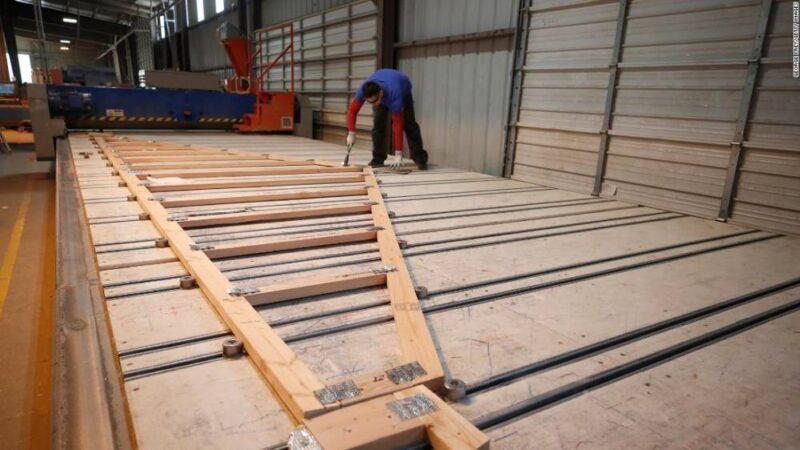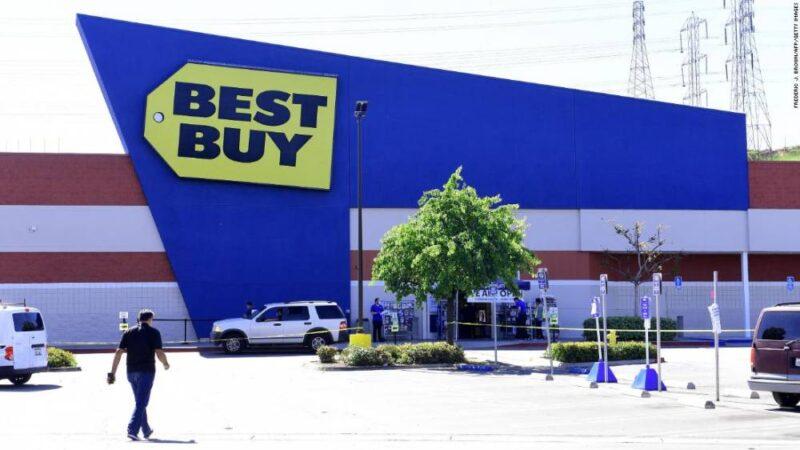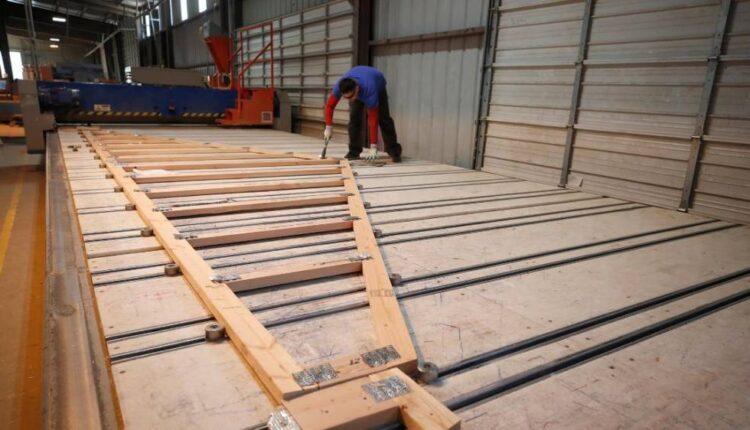New York (CNN Business)Since Covid-19 erupted last spring, Washington came to the rescue with more than $5 trillion of fiscal stimulus. That unprecedented rescue effort helped prevent the economy from plunging into a depression.
Now, even though inflation is surging and unemployment is shrinking, President Joe Biden is calling for spending another $4.5 trillion on infrastructure, education and childcare. That bold agenda is raising concerns that Democrats are about to overheat an already-booming economy.
I do not expect Build Back Better to cause a return to 1970s-style inflation."
Republicans are making just that case. Senate Minority Leader Mitch McConnell warned that Biden’s recent budget announcement “would drown American families in debt, deficits and inflation.”
But it’s not that simple. The White House isn’t calling for borrowing heavily for another rescue plan like the stimulus-check driven $1.9 trillion package enacted in March. That type of short-term support simply isn’t needed right now.
Instead, Biden’s American Jobs Plan and American Families Plan are long-term investments aimed at combating the worker shortage, boosting productivity and easing inequality. And unlike the stimulus package, this Build Back Better agenda would be paid for mostly by raising taxes on corporations and the wealthy.Read MoreThat’s why it’s not fair to paint Biden’s proposals as the inflation bogeyman the GOP is pushing.”Build Back Better is about long-term growth, not near-term stimulus,” Mark Zandi, chief economist at Moody’s Analytics, told CNN Business. “I’m not concerned the economy will overheat because of that support.” In fact, a Moody’s analysis published last month found that the near-term impact of Biden’s plan is “small,” even as it provides “meaningful longer-term economic benefits” by raising labor force participation and education attainment.
Supply, not demand, is the focus this time
Joe Brusuelas, chief economist at RSM, said the inflationary impact of the Biden agenda will be limited by the long-term nature of the investment, low borrowing costs and America’s aging demographics.”I do not expect Build Back Better to cause a return to 1970s-style inflation,” Brusuelas said. “And the modernization of aging infrastructure will likely increase productivity, which will tend to offset inflationary impulses.”

Steel and lumber prices are sky-high. Lifting Trump's tariffs could helpAs with most factors in economics, it all comes down to supply and demand. By distributing checks, forgivable loans and aid to local governments, the stimulus packages of 2020 and early 2021 were aimed at lifting plunging demand during the pandemic. Now, the focus is on adding much-needed supply.A White House official told CNN Business that the investment proposals from the American Jobs Plan and American Families Plan are “designed to help boost the economy’s supply side — labor supply and productivity — by reversing chronic disinvestment in infrastructure, education, public health and economic security.”Boosting the supply of workers is a particularly admirable goal given today’s worker shortage and the longer-term challenge posed by America’s aging population. As of March, there were a record 8.1 million job openings in the United States. Manufacturers, restaurants and other businesses are struggling to hire, a problem economists mostly blame on childcare issues, health concerns and enhanced unemployment benefits.
How soaring childcare costs slow the economy
To fight a worker shortage that is “getting worse by the day,” the US Chamber of Commerce this week called on the government to ramp up legal immigration and support parents struggling with the high cost of childcare. The pandemic has shined a bright light on how reliant the US economy is on affordable and accessible childcare. Millions of women dropped out of the workforce during the health crisis that shut down schools and daycare centers.

Chamber of Commerce: Worker shortage can't be solved without ramping up immigrationBut even before the pandemic, childcare costs were a major headache for families. Over the past two decades, the cost of daycare has doubled compared with a 50% rise in prices of all goods and services, according to Moody’s Analytics. The average cost of putting a child younger than 5 into full-time formal care is nearly $10,000 nationally, but could be as high as $20,000 in certain areas, Moody’s said.For many parents, it simply made more financial sense to stay home rather than pay exorbitant childcare costs. Labor force participation by women in their 20s, 30s and early 40s peaked in the late 1990s, according to Moody’s. “Families are in desperate need of high-quality, affordable childcare,” Moody’s said. And many companies are desperately in need of workers. That’s why childcare support receives the most funds in Biden’s American Families Plan, which calls for families earning less than 150% of their state’s median income to spend no more than 7% of their income on childcare. Some working families would have their childcare costs fully covered.”Increasing the labor supply would allow the economy to grow faster in the longer run,” said PNC chief economist Gus Faucher.
‘Politics isn’t fair’
However, Faucher said he is concerned that more deficit-financed spending could cause a boom-bust scenario. “There are a lot of unknowns, but it does raise the potential that inflation could heat up and get out of control,” he said. The Biden administration has pushed back on inflation fears, arguing price spikes rippling through the economy today are only temporary and will fade away as America fully reopens.

Here's why this summer's jobs reports might seem underwhelmingOf course, Washington is infamous for only being able to focus on the here and now. And clearly, inflation is an issue right now — and no one can say for certain how it will play out given the unique nature of this recession and recovery. “The reality is that in DC, everything is an immediate, short-term political decision. Long-term thinking is as common as bipartisanship,” said Ed Mills, Washington policy analyst at Raymond James. “Inflation concerns make it more likely that most, if not all, of the infrastructure package will be done on a partisan basis.”Greg Valliere, chief US policy strategist at AGF Investments, said Republicans sense an opening to use worries about rising prices to block the Biden agenda.”Republicans can say the more money this president spends, the greater the inflation threat may be,” Valliere said. “I’m not sure there is a clear connection. It’s a stretch to say it’s Biden’s fault. But politics isn’t fair.”
What if the bond market vigilantes return?
Biden has called for paying for most, though not all, of his Build Back Better agenda by raising $3.5 trillion in taxes, including by raising the corporate tax rate from 21% to 28%. Moody’s Analytics estimates the package would be totally paid for within 15 years. Yet it’s an open question whether Biden will be able to get a major tax hike, the first since 1993, through Congress, especially as companies deal with rising inflation. For now, Wall Street is not freaking out about inflation. Stock prices are near record highs and bond rates are still historically low. Of course, that situation could change if inflation gets even hotter or if the Federal Reserve signals a sudden shift.

Best Buy CEO: These 4 challenges are why it's hard to hire workers right now”The biggest risk to the infrastructure agenda of Joe Biden is a bond market inflation scare,” said Mills.
A bond market freakout would also raise America’s borrowing costs, at a time when Biden is planning to grow the nation’s mountain of debt even further. “We need to approach this with caution,” said Kristina Hooper, chief global market strategist at Invesco. “What if borrowing costs move higher? That’s when it becomes a huge burden.”
Source: edition.cnn.com

